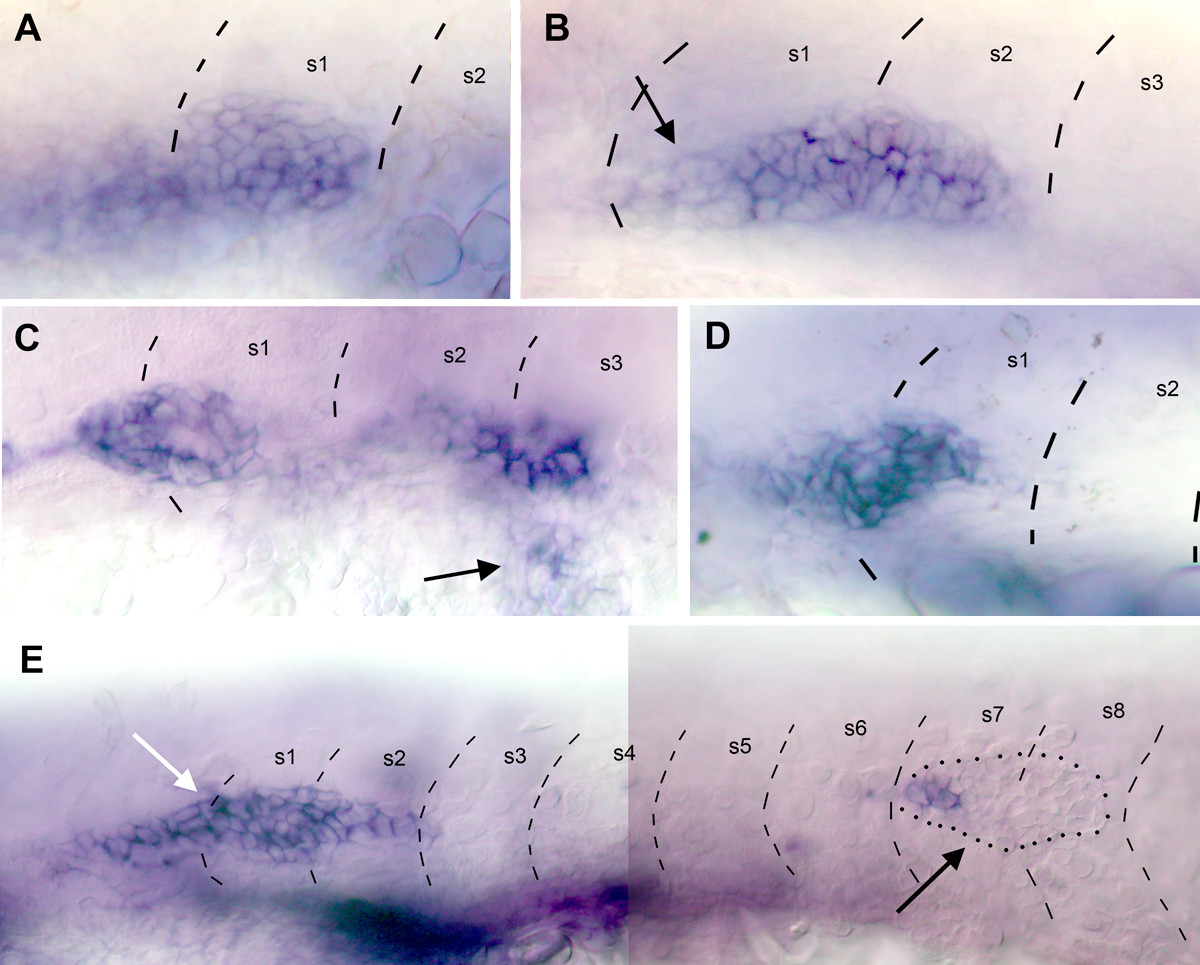Fig. 9 Expression of cxcr4b and cxcr7 in morphant embryos. A, B: expression of cxcr4b in 32hpf Mo-cxcr7 embryos. A: the shape of the stalled primordium is usually round and expression of cxcr4 appears ubiquitous. B: in a primordium that has migrated over a few somites, the expression of cxcr4b is reduced in the trailing cells (arrow), but the expression appears less asymmetric than in wild type embryos (compare with Fig. 3C). C, E: Expression of cxcr7 in 32hpf cxcr4b-MO1 embryos. C: in this embryo part of the primordium has reached somite 2–3 and has begun to extend over the yolk (arrow). All cells express cxcr7. E: an exceptional case where half of the primordium has remained around somite 1 and the other half has migrated up to somite 8 (in a normal embryo the primordium would have reached somite 15–20 at this age). In the stalled group all cells express cxcr7 while in the migrating group only the trailing cells express this gene. D: inactivation of SDF1 leads to the stalling of the primordium and to the expression of cxcr7 in all cells. Dashed lines indicate the positions of somite borders and dots in panel E show the outline of the primordium, as seen under Nomarski optics.
Image
Figure Caption
Figure Data
Acknowledgments
This image is the copyrighted work of the attributed author or publisher, and
ZFIN has permission only to display this image to its users.
Additional permissions should be obtained from the applicable author or publisher of the image.
Full text @ BMC Dev. Biol.

